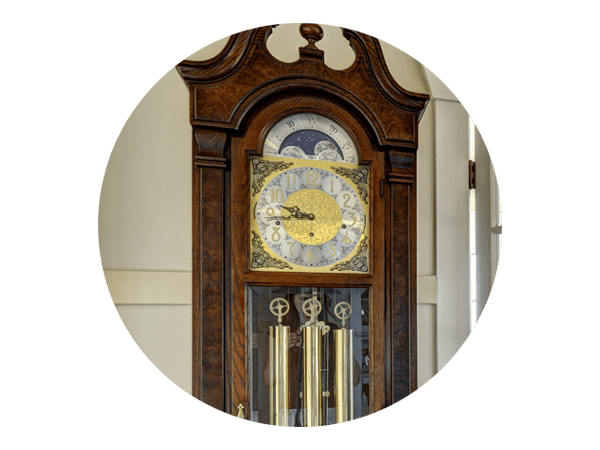Every grandfather clock is different, but these steps are a good place to start:
Inspect your grandfather clock for signs of existing structural damage or weakness so you can take the appropriate precautions before you move. Take pictures of any existing damage—you’ll need them if you need to make an insurance claim.
Disassemble the clock. Do not, under any circumstances, attempt to move a grandfather clock without dismantling it. Remove glass panels, secure the chains and cables, remove weights one by one, remove the pendulum, reposition the side access panel, and remove the top of the clock, if possible. You may want to call a clock expert to take care of this process.
Cover and protect any areas, especially edges and corners, that could sustain damage in transport.
Pack the internal components into a heavy-duty moving box. Secure them in place with bubble wrap, crumpled packing paper, or ideally, specially fitted styrofoam. For antique or especially valuable grandfather clocks, crating is recommended for maximum protection.
Pack the body of the clock into a crate, held in place with specially fitted styrofoam.
For detailed packing instructions, keep reading: How Do I Ship a Grandfather Clock?







